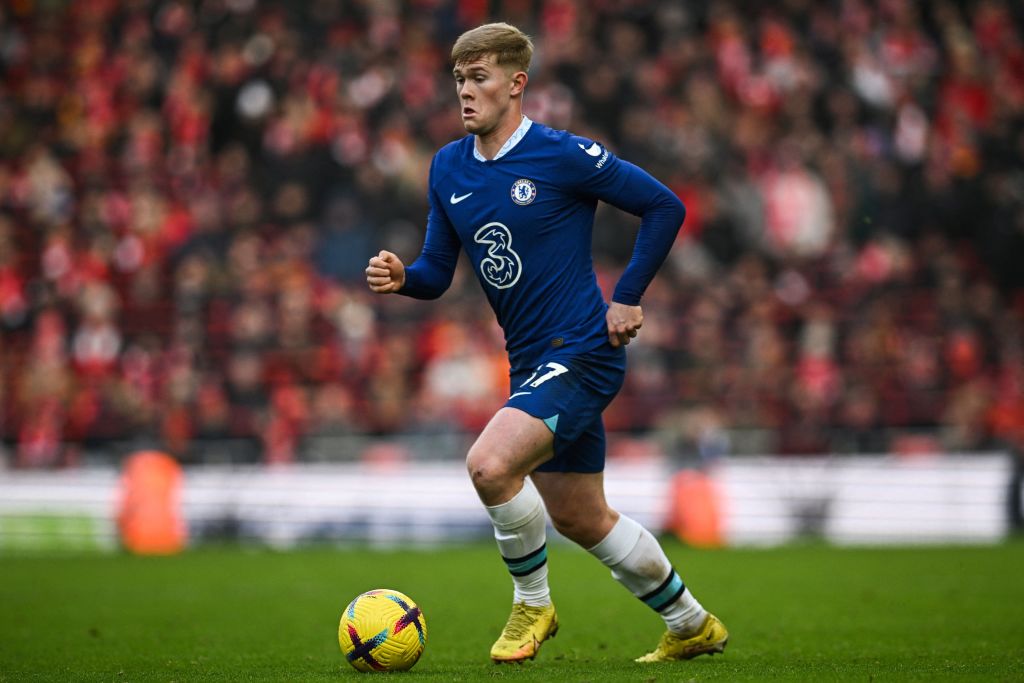
Football Manager devotees in particular will remember a time when home-grown prospects were highly-prized by Premier League clubs thanks to the top flight’s rules around squad composition. Now, Chelsea are trying to flog their academy products in every direction.
Chelsea have already made over £85m from the sales of Ian Maatsen to Aston Villa, Omari Hutchinson to Ipswich Town and Lewis Hall to Newcastle United.
Conor Gallagher could be next on the list: he’s been reported to be in negotiations over a move to Atletico Madrid. Trevoh Chalobah is said to be considered dispensable and was not taken to their pre-season camp in America, with Manchester United said to be keen. Armando Broja could also go.
VIDEO: Riccardo Calafiori Is The FINAL Piece Of Mikel Arteta's Jigsaw
Chelsea's sale of academy products is all about Premier League PSR rules
What we’re seeing here, as you may already be aware, is not just Chelsea having decided they have given those players enough of a chance to impress, seen them fall short and that it would be best for them to move on: it’s actually a wilful effort to boost their Profit & Sustainability Rules (PSR) position.
PSR is the Premier League financial control measure that limits top-flight clubs to posting financial losses of no more than £105m over any given three year period, with punishments for exceeding that figure going up to and including points deductions – as Everton and Nottingham Forest found out last season.
However, the way profits and losses are calculated on company accounts is not as straightforward as the money you’ve had coming in and out of your bank account – that’s cashflow.

Instead, the profit and loss calculation includes a number of boring accounting practices that are designed to recognise that some of the things a company spends money on retains value and could later be sold (even if in reality, they may not be). For a traditional business, this may include machinery, property or vehicles. These are known as assets – and for football clubs, players are also considered assets for accounting purposes.
Of course, if your company buys a lorry, its value will diminish over time, and so its value in the accounts is also reduced year on year to reflect this.
Football clubs apply this practice to their players, too, reducing their value over the length of their contract – so if you sign a player for £10m on a five year contract, he will only be valued at £2m in your accounts after year four. This is called amortisation.

That means that if you sell that player for £30m at this point, the amount of profit you can validly report is not £20m – even though in real cash terms, that is correct – but instead £28m, because £8m has been written off the amount you initially paid for him.
That means that for Chelsea (and any other club), if they are trying to boost their PSR position, they could end up substantially better off selling an academy prospect, for whom they paid nothing, than they would be from selling somebody less important to the first team who they signed a year or two ago.
That’s further complicated by the fact that for accounting purposes, clubs are allowed to spread the cost of new signings over the duration of their contract – so that £10m player on a five-year deal only hits their profit number by £2m per year over those five years.

That is a very short-termist strategy, of course: do it to everybody, and before long you have stacked them up so high you’ve left yourself little wriggle room for future years.
Nonetheless, Chelsea were so keen to do this after Toff Boehly’s takeover two years ago that they started signing players up to monstrously long contracts: Enzo Fernandez was handed an eight-year deal to allow them to split his £106m fee over that period, for instance. That was so controversial that Premier League clubs actually voted last December to limit all player amortisations to a maximum of five years.
That may have helped Chelsea to bring players like Fernandez in, but has left them an issue now, because his valuation in their accounts, even after a year at the club, is £92.75m.

That means to have made the same accounting profit on Fernandez this summer that they made on Maatsen’s £37.5m sale to Aston Villa - which was 100% profit for them - they would have had to sell Fernandez for £130.25m. And good luck finding a buyer for that fee.
In the old days, to a greater or lesser extent depending on which version of FFP was in effect, £37.5m was £37.5m and it didn't really matter where it came from.
That's because cashflow was much more of a concern than profit and loss: a profitable business can still go bust if they aren't getting cash in to pay the bills, and a loss-making business can continue indefinitely as long as they have enough cash passing through them that nobody gets annoyed enough at late and missing payments to petition for them to be put into administration.

Now, PSR has made it so that £37.5m can be worth more to a side than £100m if their explicit aim is to improve their position under the profit and loss rules.
Not only that, but you're actually better off in the immediate term selling an academy player for £37.5m and signing a new player of equivalent quality for the same money or even more, because that new signing will only hit your profitability for a fraction of the amount in year one, while all the sale counts as new revenue coming in.
That's why we saw a small flurry of players moving in opposition directions on June 30 - the last day of a football club's financial year.
There is an irony that Chelsea, a club once accused of stockpiling dozens of youngsters with little realistic prospect of first-team action, are now so keen to get rid of those who have made the grade thanks to the rule change.
The whole thing spells out the difficulty rule-makers have in setting policy. It becomes a never-ending game of whack-a-mole, in which you address one issue only for a new set of different problems to pop up in their place.
As a footnote to finish back where we started: Chelsea are not too concerned about fulfilling the homegrown rules, either, which allow only 17 non-homegrown players per Premier League squad.
Nationality is not a factor, and so (among others) Robert Sanchez, Tosin Adarabioyo, Ben Chilwell, Levi Colwill, Reece James, Kiernan Dewsbury-Hall, Raheem Sterling, Nono Madueke and Cole Palmer – and plenty more – all qualify as homegrown.
More Chelsea stories
What Enzo Fernandez did on his return to Chelsea training following racism storm
Chelsea retain interest in world-class star - but have made move for alternative: report
Victor Osimhen's agent lashes out and demands 'respect' after Chelsea transfer links







